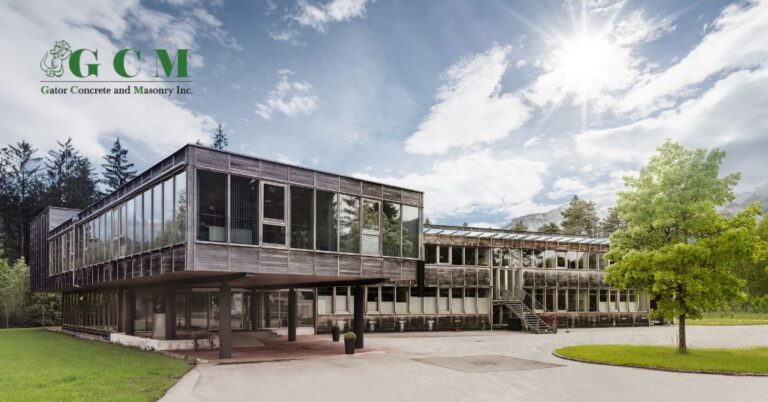In today’s present times, people are looking to live more sustainably and use less energy. As a result, building a home with passive house systems has become a popular choice. The Passive House, also known as Passivhaus, is a standard from Germany. It consists of a strict, optional standard and five main ideas that aim to make buildings more energy-efficient and sustainable, which makes them much less harmful to the environment and their surroundings.
This article discusses the main ideas, benefits, design strategies, and problems of passive house systems. Let’s examine how critical these systems will be in the future of environmentally friendly buildings and sustainable living.
What Are The Five Main Ideas Behind Passive House Systems?
In a nutshell, passive house systems allow us to build homes that use less energy, have better air quality, and make less noise. In this section, let us look at the five main ideas that passive house systems are based on.
Thermal Insulation
The first thing we should consider in a passive home is to check your building shell and ensure you have proper thermal installation. That means making something that is very energy efficient and very well protected. The extra layer of insulation comes from a “blanket” that is put on the floors, walls, and ceilings to keep the heat in. You must make sure that your insulation system does not have thermal bridges, which are places where heat can leave more quickly.
Some designers or builders will choose to use insulation materials like wood fiber and Porotherm blocks to build the whole house so that the home will not need as much energy from outside sources. The end goal is to add insulation that stops the heat loss in the winter and reduces heat gain in the summer.
High-Performance Windows and Doors
These types of windows and doors are made to save a lot of energy. They usually have triple glazing and sealed frames, which are very important for keeping the temperature inside comfortable and stopping heat loss. To keep heat in, all window frames must be professionally sealed and double-glazed. A passive building will have triple windows because they help keep heat in. High solar heat gain windows can also be put on the sides of the house that need winter sun, and low solar heat gain windows could be placed where summer sun could do the most damage.
Airtightness
An airtight home means there are no drafts or leaks and does not let air in or out, keeping the heat inside and lowering energy costs in the long run. Passive houses need to be very airtight to stop air from leaking out without being stopped. This is important because uncontrolled air leaks can cause a lot of heat loss and waste energy. It will also help target humidity problems and provide the best comfort inside.
Mechanical Ventilation with Heat Recovery (MVHR)
After ensuring the building doesn’t let any air in or out, you need to find a way to get rid of the old air and bring in new, clean air that is kept at the right temperature. MVHR systems bring in fresh air while collecting heat from the air that leaves the building. This keeps the air inside clean and lowers the amount of energy needed for heating and cooling. It will keep the house from getting stuffy and stop condensation from forming in colder weather.
Minimized Thermal Bridging
Several design and construction strategies can be used to reduce thermal bridges, which are places where heat can move through the building surface more efficiently and waste energy.
While it is assumed that a passive home will not have any thermal bridges, there is still a chance that there will be, depending on the actual design or implementation and installation of the materials. It is critical to minimize them in order for the home to be as efficient and effective as possible.
The Benefits of Using Passive House Systems for Your Next Home
Now that we have discussed the five main ideas behind passive house systems, let us look into the benefits you can realize. As mentioned earlier, passive house systems aim to create a sustainable, long-lasting, and environmentally friendly building that uses less energy and less cost for repairs and maintenance in the long run.
Energy Efficiency
Passive homes use up to 90% less energy to heat than regular houses. This is achieved through better insulation, buildings that keep air out, and mechanical ventilation systems that work well.
Cost Savings
Lower energy use means significant savings on utility bills over time, even if the initial building costs are higher. It may be intimidating to invest in a passive house system at first, but the benefits and savings far outweigh the initial costs.
Better Comfort
Since passive houses have better insulation and airtightness, they are much more comfortable than regular homes since the temperature inside stays the same all the time. This means there are no cold drafts or hotspots.
Better Indoor Air Quality
MVHR systems ensure that fresh air is always coming in, lowering the amount of toxins and allergens inside. This is especially helpful for people who have breathing problems. Passive houses have an environmental impact because they use a lot less energy and depend less on fossil fuels, which means they release fewer greenhouse gases.
Tips on How to Make Passive House Systems Work
Building a passive house involves a meticulous design and construction process that maximizes energy efficiency, comfort, and sustainability. It takes a lot of careful planning and attention to detail. In this section, we provided a few strategies that you should consider to take advantage of everything it has to offer.
Orientation and Solar Gain
Buildings should be placed in a way that they get the most solar gain in the winter and the least amount in the summer. Choose a site with an optimal orientation, typically with the main living areas facing south, to maximize solar gain. You can place large windows facing south to let in sunlight or shade devices to keep the room from getting too hot in the summer.
Climate Considerations
Understand the local climate to tailor the design strategies for insulation, ventilation, and shading. The construction strategies for passive houses need to be changed to fit the environment where they are built. For instance, methods that work well in cold places might work better in hot, humid areas.
Careful Design and Planning
When it comes to passive homes, many design and build techniques need to be considered. For example, a compact building shape can minimize the surface area exposed to external conditions, reducing heat loss.
Thermal Envelope
The walls, roof, and base make up the thermal envelope, which is meant to keep heat inside as much as possible. It is essential to have suitable materials and efficient insulation in order to keep the building as airtight as possible.
High-Performance Windows and Doors
Strategically place high-performance windows to balance solar gain and minimize heat loss. You can choose high-performance windows and doors based on your home’s needs. There are a lot of options, but you can select them based on their U-value (which measures how much heat they let through) and G-value (which measures how much sunlight they let in).
Use Construction Project Management Software
A construction project management software, like Pro Crew Schedule, can help you track your project and model and optimize the building’s energy performance. This can also help you monitor and ensure compliance with Passive House standards by getting a clear overview of what is happening in your project. It lets you identify potential issues early in the design process and be able to solve them before it turns into a big problem.
Quality Control
During construction, it is essential to pay close attention to every detail in order to make sure the building is airtight and eliminate thermal bridges. Any holes or damage can make the building less energy efficient.
Occupant Behavior
How people use passive house systems can affect their effectiveness. For example, it is essential to use air systems and shading devices correctly to keep your home comfortable and save energy. Make sure to align and communicate with your client to create the best possible value for the home.
What Is Next for Passive House Systems?
In the following years, passive house systems are likely to become more and more popular as the building industry continues to focus on being environmentally friendly. With the construction industry being one of the top contributors to energy waste, it is critical to create sustainable and efficient homes. As building materials, technology, and methods improve, passive houses will become even more practical and affordable, resulting in a higher demand.
Building a passive house requires careful planning, high-quality materials, and meticulous construction practices. By adhering to the five core principles of thermal insulation, airtightness, high-performance windows, mechanical ventilation with heat recovery, and minimized thermal bridging, you can achieve a home that is not only energy-efficient but also comfortable and sustainable.
In the quest for healthy, energy-efficient living, passive house systems are a big step forward. Even though there are still problems, Passive Houses have a lot of long-term benefits, such as lower costs, better comfort, and better indoor air quality.

